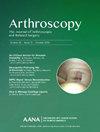科学手稿审查要点》。
IF 4.4
1区 医学
Q1 ORTHOPEDICS
Arthroscopy-The Journal of Arthroscopic and Related Surgery
Pub Date : 2024-10-01
DOI:10.1016/j.arthro.2024.07.009
引用次数: 0
摘要
临床医生有多种理由考虑担任审稿人,包括提高他们的临床知识和研究技能、成为更好的作者以及为推动科学知识发展做出贡献。关节镜系列期刊的审稿人可以在期刊网站上找到必要的工具,包括《撰稿人和审稿人期刊课程》:原创科学文章核对表和模板》、《系统综述和元分析核对表和模板》以及《研究珍珠集》。关节镜审稿人向期刊编辑提供编辑非常依赖的保密评论,总结研究的优势和局限性,以及支持审稿人是否建议发表投稿的理由。此外,无论文章是否被推荐发表,审稿人都会向作者提供评论意见,提出改进研究的建议;目的是提供有益的反馈。审稿人关注的重点领域包括:可重复的方法(就像一本烹饪手册)、临床(而非统计)意义、图文并茂的图表以及详细的图例。最重要的是,审稿人必须确保研究结论完全基于研究结果,从而确保研究假设是否得到研究结果的支持。最重要的是,审稿人必须确保作者抵制常见的诱惑,不要做出超出研究结果或超越研究结果的结论。本文章由计算机程序翻译,如有差异,请以英文原文为准。
Essentials of Scientific Manuscript Review
There are multiple reasons for a clinician to consider serving as a manuscript reviewer, including improving their clinical knowledge and research skills, becoming a better writer, and making contributions to advancing scientific knowledge. Reviewers for the Arthroscopy family of journals can find essential tools on the journal websites, including a Journal Course for Writers and Reviewers: Checklists and Templates for Original Scientific Articles, Checklists and Templates for Systematic Reviews and Meta-Analyses, and a Research Pearls Collection. Arthroscopy reviewers provide journal editors with Confidential Comments, on which the editors heavily rely, summarizing study strengths and limitations as well as rationale supporting the reviewer’s recommendation as to whether the submission is recommended for publication. In addition, reviewers provide Comments to Authors suggesting opportunities to improve the research whether or not the article is recommended for publication; the goal is to provide helpful feedback. Key areas of reviewer focus are reproducible methods (like a cookbook), clinical (rather than statistical) significance, illustrative and well-labeled figures, and detailed figure legends. Most of all, reviewers must ensure that the conclusion of a study is based entirely on the study results and thus whether or not the study hypothesis is or is not supported by the results. Crucially, reviewers must ensure that authors resist the common temptation to state conclusions that go beyond or overreach the study results.
求助全文
通过发布文献求助,成功后即可免费获取论文全文。
去求助
来源期刊
CiteScore
9.30
自引率
17.00%
发文量
555
审稿时长
58 days
期刊介绍:
Nowhere is minimally invasive surgery explained better than in Arthroscopy, the leading peer-reviewed journal in the field. Every issue enables you to put into perspective the usefulness of the various emerging arthroscopic techniques. The advantages and disadvantages of these methods -- along with their applications in various situations -- are discussed in relation to their efficiency, efficacy and cost benefit. As a special incentive, paid subscribers also receive access to the journal expanded website.

 求助内容:
求助内容: 应助结果提醒方式:
应助结果提醒方式:


